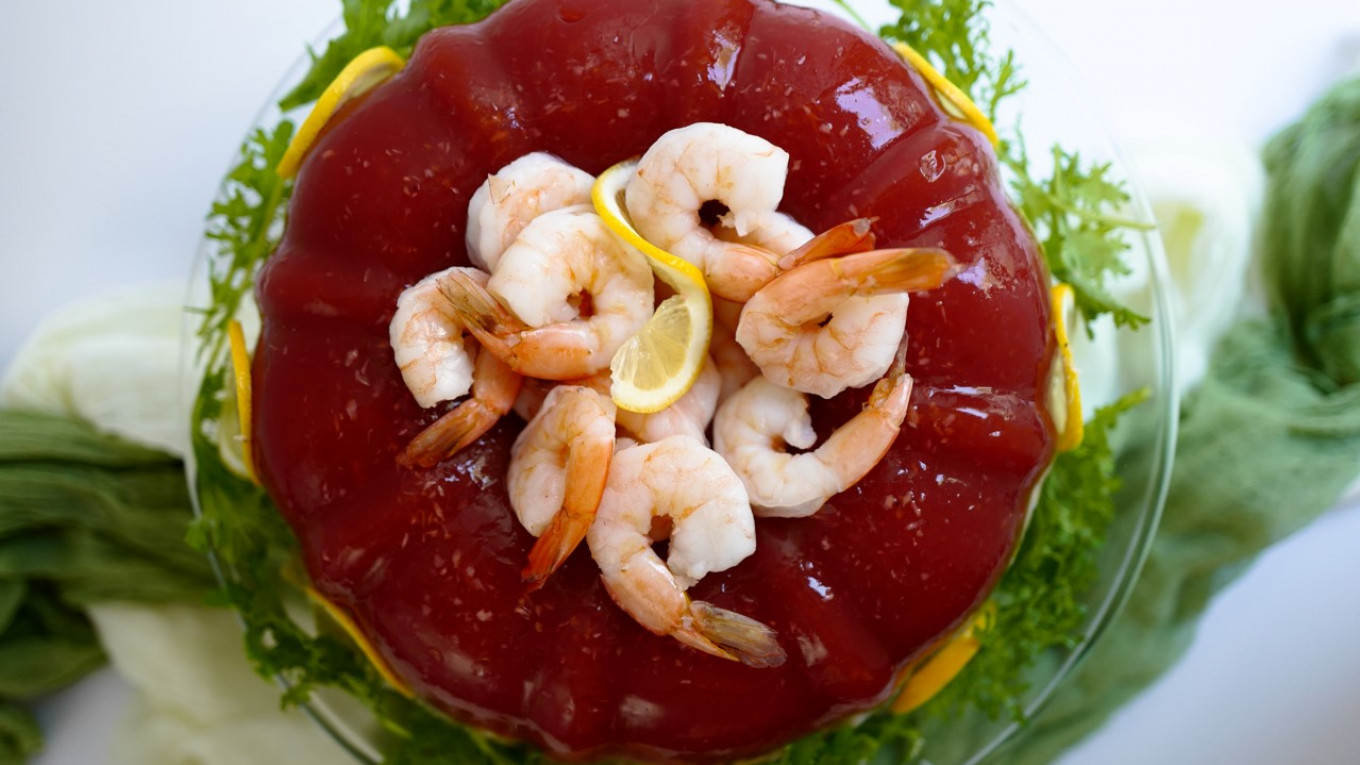The saying, “what goes around, comes around,” true about so many things, is especially apt regarding boomeranging culinary trends. Thanks to TikTok, many antiquated dishes that might have otherwise quietly died deserved deaths have come roaring back into fashion. I appreciate a good charcuterie board as much as the next person, but I don’t aspire to a creation on the scale of the Sistine Chapel — particularly during the holidays. I found the corn rib trend tedious, and hand to heart, I was making that cherry tomato and feta pasta thing for about a decade before TikTok was even invented.
But when savory meat jellied salads cropped up literally everywhere, I sat up and took notice. And I leaned in, confident that my two decades in Russia would (finally) put me ahead of this unusual curve.
Aspic is certainly nothing new. It’s been around since at least the fourteenth century, the active ingredient in the glistening and jiggling amber and topaz centerpieces of medieval and renaissance banquets. Before the 20th century invention of powdered gelatin, extracting the gelatinous collagen from a calf of pig’s foot itself was a time-consuming and laborious process, as was using that substance to craft multi-layered towers of different colors, transparent enough to showcase the exotic foods floating suspended inside.
Aspic was used not only for its show-stopping presentation value but also for the more practical reason that it kept meat from drying out. Antonin Carȇme (1783 - 1833), that titan of nineteenth-century French chefs, whose outsized influence on Russian cuisine is still felt today, adored using gelatin to mortar together the elaborate, almost architectural dishes he served at the court of Alexander I.
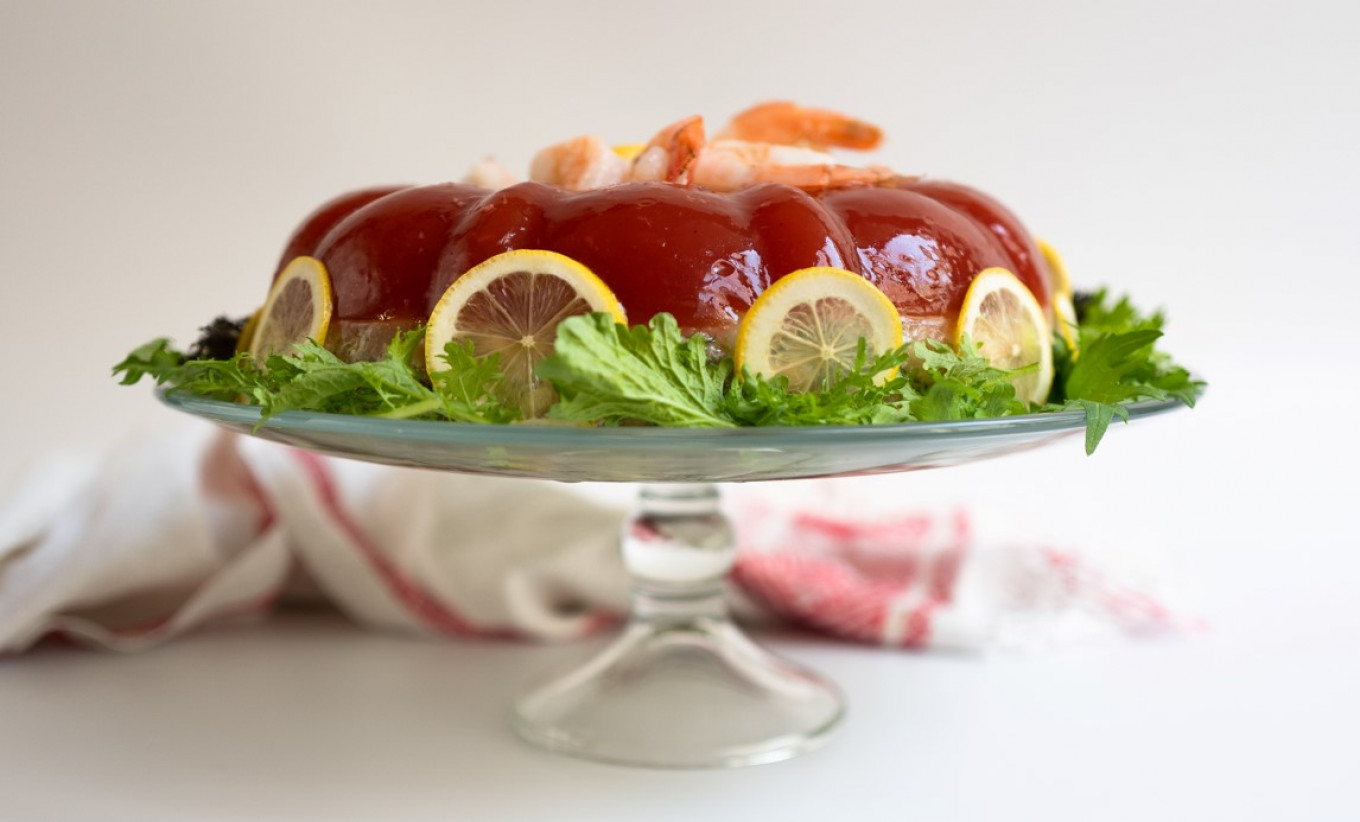
An “aspic” in the eighteenth-century referred to the entire dish that included a jellied part. Only later would it come to refer to the jelly itself. Aspics became far easier to make after the invention of powdered gelatin in the late nineteenth century, and with electric refrigeration in every home after World War II, savory aspics, or “jelly salads” became as popular with the masses as they had been with aristocrats.
If jellied salads have waned in popularity in recent decades in the rest of the world, thanks to Carȇme, in Russia, they have never gone out of fashion and are still an important element of the holiday table.
If you’ve spent time around a festive Russian zakuska board, chances are you’ve encountered one of Russia’s jellied salads. And if you’re like me, you’ve probably given it a wide, wide berth, particularly after the hostess proudly assures you that she’s made it the old-fashioned way: by boiling a calf’s or pig’s foot into submission. You will recognize it by its gummy consistency, most often presented in a loaf shape, with lots of beige bits floating in it. This is kholodets, one of the key centerpieces of any holiday table in Russia, and a dish that never fails to baffle foreigners.
Kholodets is indeed made “the old-fashioned way,” extracting the natural gelatin from a large animal’s foot by boiling it for about four days until a good deal of what was once a foot is now a thick, gelatinous mixture. That’s the jelly part. The meat part comes from whatever remains clinging to what’s left of the calf’s foot. This gets mixed into the jelly, along with other bits and bobs if the chef is creative, then chilled in the fridge, and brought to the table with a flourish.
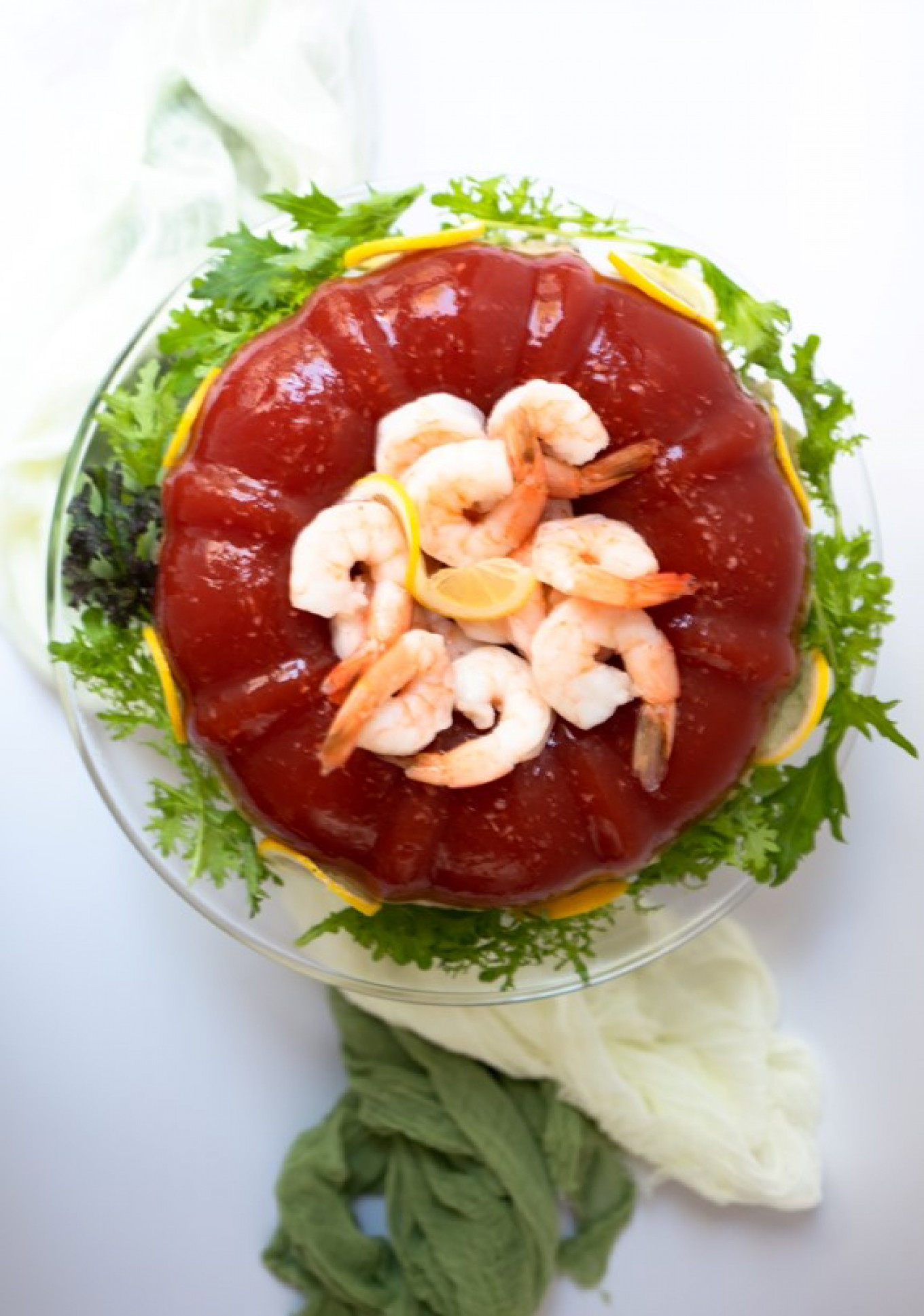
I have had many unfortunate encounters with kholodets. I took a tentative bite of one during an Easter brunch and got a mouthful of raw horseradish, necessitating a quick dash to the bathroom, hand clamped over my mouth. This did nothing to endear me to my hostess. I’ve struggled to hide large chunks of undercooked carrot (the traditional decor of a kholodets) in my napkin, but as everyone knows, the paper napkins you get in Russia aren’t up to that kind of job. And finally, I was pressed into making an authentic kholodets from scratch by a Sadistic editor when I relatively new to food writing. I was terrified to tiptoe up to the (suddenly understandably extensive) calf and pig leg section of Dorogomilovsky market. A nice Central Asian guy took pity on me and wrapped it up for me in lots of newspaper, throwing in some sweetbreads for free, along with lots of advice on how long to boil the foot. It was okay in the end: I made it in the shape of a train engine, and it photographed as well as could be expected. My husband chivalrously dealt with the hoof.
If kholodets is too much to contemplate, zalivnoye might be more to your taste. It certainly is to mine. This iteration of aspic is far more flexible than kholodets. You get to use commercial gelatin, which changes the entire experience. There is a lot more creative scope to a zalivnoye, which can be made with any kind of meat or fish, as well as juice, fruits, vegetables, herbs, and olives.
With the holidays just around the corner, consider trying this boozy, fishy zalivnoye, which takes its inspiration from my favorite holiday beverage: the Bloody Mary. This is a double layered zalivnoye: spicy, alcohol-laden tomato juice on top and creamy crab salad on the bottom. Keeping them separate not only looks fabulous but also keeps the flavors from overpowering one another. If you can get your hands on Clamato™, that ambrosial cocktail of tomato and clam juice, it will elevate this into something truly epic. That is, if you like Clamato™ — I find people either adore it or loathe it with very little middle ground.
Use any kind of container you wish. I like the shape of a circular bundt pan, which makes for an easy un-mold, and looks very elegant when plated and garnished. You can also use the well for more shrimp. Garnish your zalivnoye generously: it makes a big difference. Jiggle all the way!
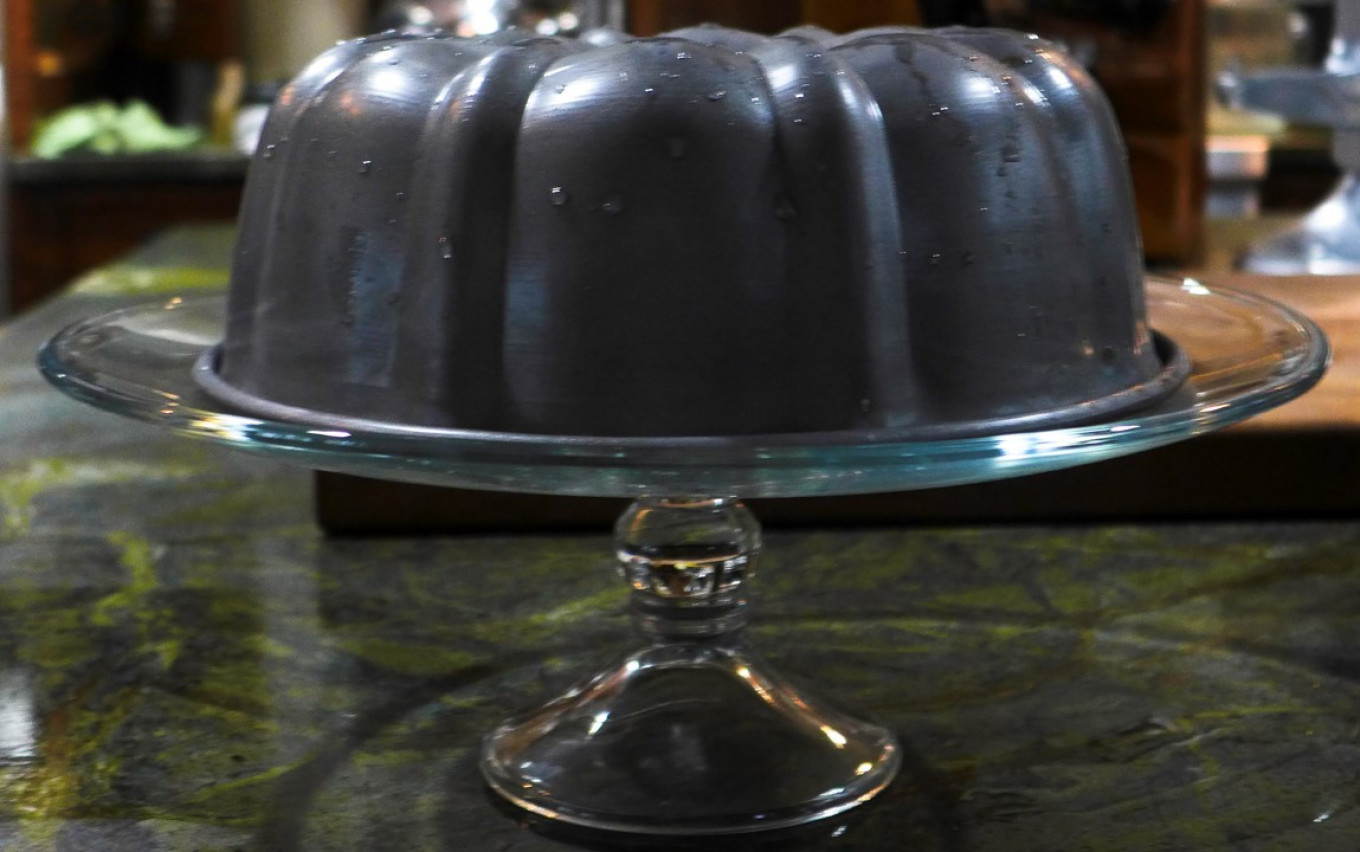
Boozy Tomato and Seafood Zalivnoye
Ingredients
For the tomato layer
- ½-cup (120 ml) water
- 1 tsp olive oil
- 2 packets (or 5 teaspoons) unflavored gelatin
- 5 cups (1.2 liters) tomato juice or Clamato™
- The juice of one lime
- 1 tsp hot sauce
- 1 Tbsp prepared horseradish
- 1 tsp salt (omit if using Clamato™)
- ½-tsp pepper
- ½-cup (120 ml) pepper or lemon vodka (optional if your guests include children)
For the crab and shrimp salad layer
- The zest and juice of one large lemon
- 2 cucumbers, peeled, seeds removed, and cut into a ½-inch dice.
- ⅔-lb (300 grams) cooked shrimp, tails removed, cut into a ½-inch dice
- ¾-lb (340 grams) lump crabmeat, cleaned and cut into a ½-inch dice
- 2 tsp salt
- 5-6 scallions, finely sliced
- ½-cup (120 ml) fresh dill
- ¼-cup (60 ml) capers
- ⅔-cup (150 ml) mayonnaise
- 1 tsp celery salt
- 1 tsp red pepper
- 1 Tbsp prepared horseradish
- 3 cups (700 ml) chicken or fish stock
- 2 packets (or 5 teaspoons) unflavored gelatin
- ½-cup (120 ml) water
Garnish
Watercress or arugula, sliced lemons, and more shrimp
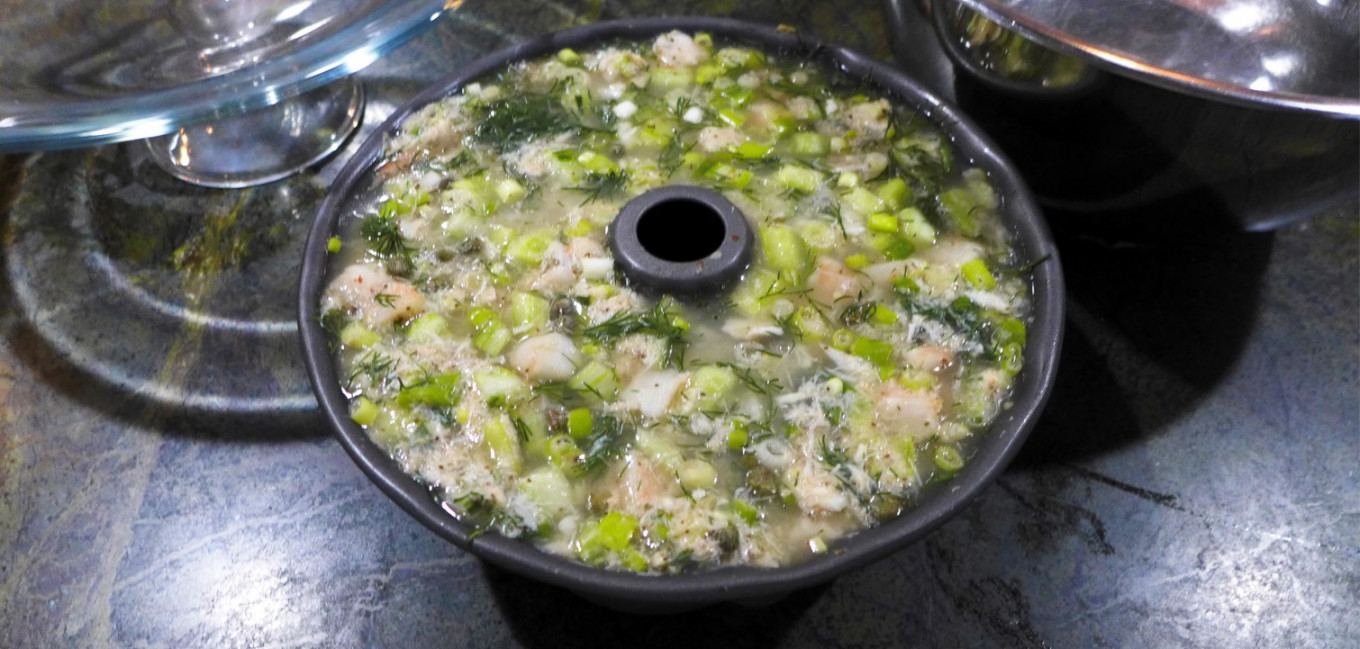
Preparation
Make the tomato layer
- Sprinkle the gelatin into the water in a large mixing bowl and leave it to proof for 7 minutes.
- Prepare a 10-inch (12 cup or 2.8 liter) bundt pan or jello mold by brushing the entire inside with olive oil.
- Heat 3 of the 5 cups (700 ml) of tomato juice or Clamato™ in a saucepan until just simmering. When the gelatin is fully proofed, pour the hot juice into the gelatin mixture in a slow and steady stream, whisking gently as you do so. Keep stirring until the gelatin is completely dissolved.
- Whisk together the remaining ingredients for the tomato layer and add them to the gelatin and juice mixture. Cool the mixture on the countertop until it has reached room temperature.
- Pour the mixture into the oiled bundt pan or mold and refrigerate for 3-4 hours until the mixture has gelled completely.
While the tomato layer is gelling, make the crab salad
- Fold together the crab, shrimp, capers, cucumbers, scallions, lemon zest and juice, spices, horseradish, and mayonnaise. Chill until you are ready to use.
- Proof the gelatin in ½-cup (120 ml) of water and leave for 5-7 minutes. Heat half of the broth until simmering, then pour it in a slow but steady stream into the proofed gelatin. Whisk until the gelatin is completely dissolved. Add the remaining broth to the mixture and cool to room temperature.
- Spoon the salad onto the surface of the tomato aspic, smoothing the top with the back of the spoon. Gently pour the gelatin and broth mixture against the side of the pan until it fills to the brim. You may end up with slightly more than you need but be sure that the broth mixture has fully saturated the salad, otherwise it will fall apart.
- Chill the zalivnoye for at least 8 hours. To un-mold, dip the pan into a bowl of warm to hot water for 15 seconds. Invert the serving platter on top of the mold and flip it over. Gently remove the mold. Chill until you are ready to serve.
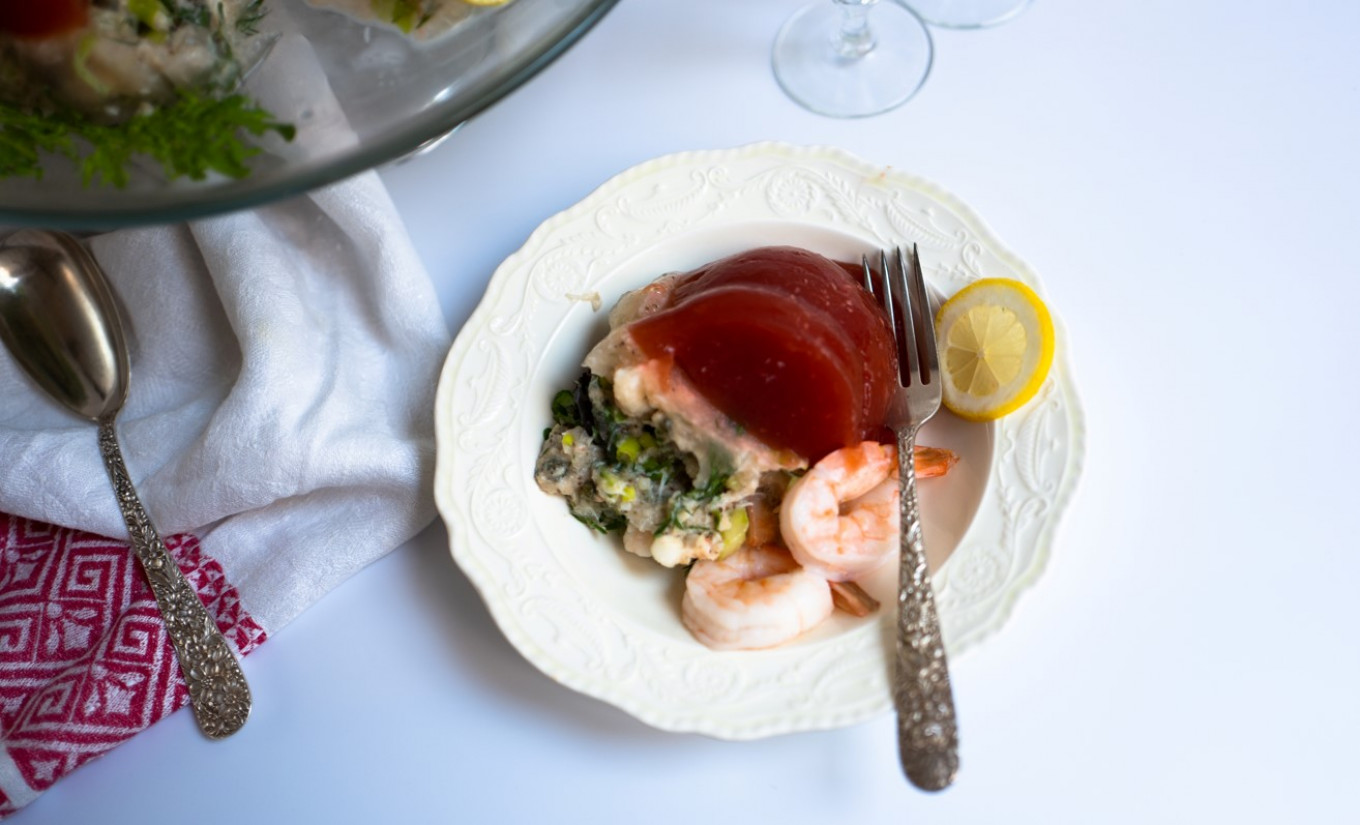
A Message from The Moscow Times:
Dear readers,
We are facing unprecedented challenges. Russia's Prosecutor General's Office has designated The Moscow Times as an "undesirable" organization, criminalizing our work and putting our staff at risk of prosecution. This follows our earlier unjust labeling as a "foreign agent."
These actions are direct attempts to silence independent journalism in Russia. The authorities claim our work "discredits the decisions of the Russian leadership." We see things differently: we strive to provide accurate, unbiased reporting on Russia.
We, the journalists of The Moscow Times, refuse to be silenced. But to continue our work, we need your help.
Your support, no matter how small, makes a world of difference. If you can, please support us monthly starting from just $2. It's quick to set up, and every contribution makes a significant impact.
By supporting The Moscow Times, you're defending open, independent journalism in the face of repression. Thank you for standing with us.
Remind me later.



